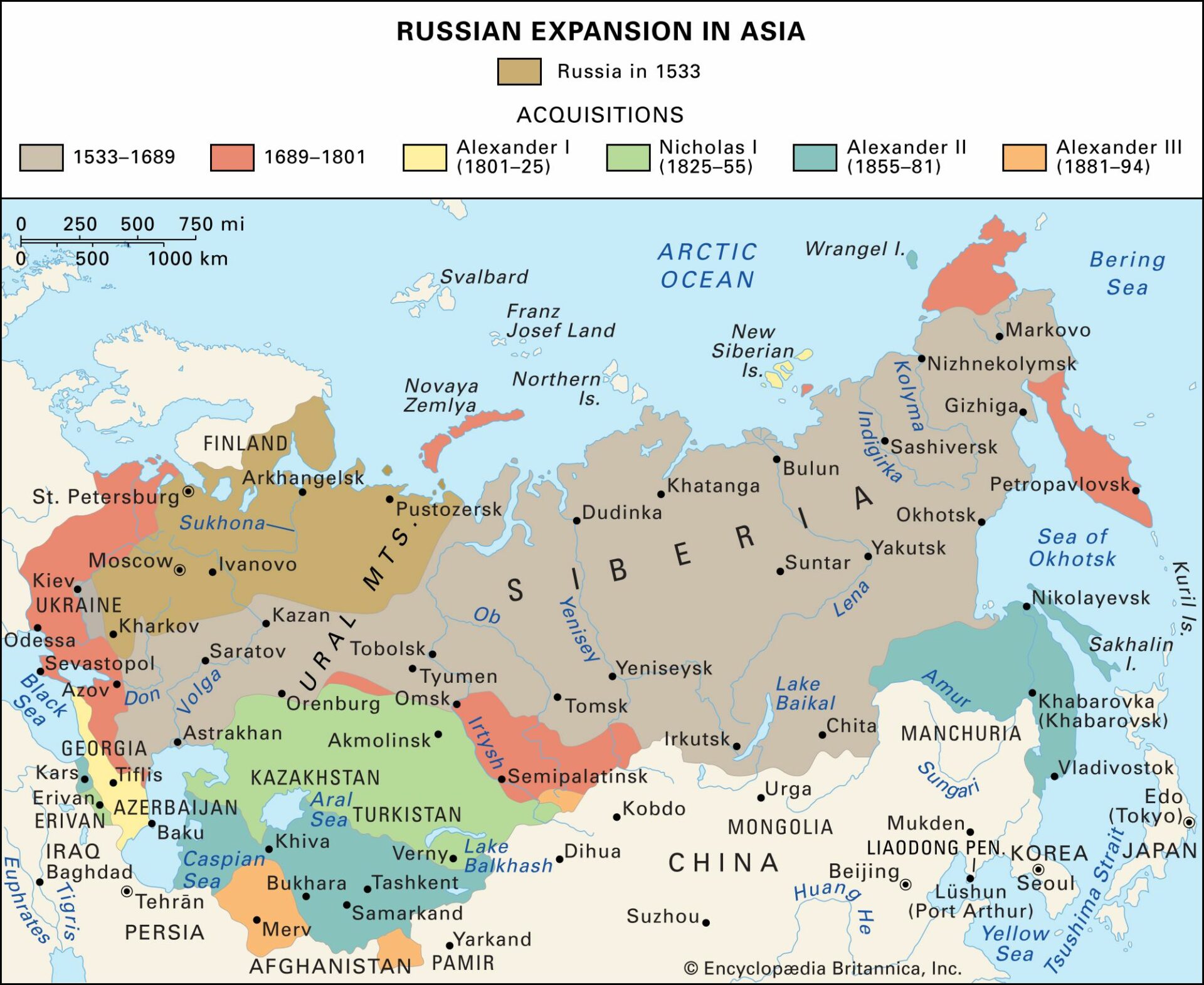The sixteenth and seventeenth centuries saw tremendous expansion of the Russian domain. Russian pioneers, in search of furs to sell and new land to settle, led the way, and the government followed. Frontiersmen in Russia were known as Cossacks. Cossack communities gradually became more settled, and two Cossack republics, one on the Dnieper River, the other on the Don, were set up. As time passed, more Cossack groups formed along the Volga River, in the Ural Mountains and elsewhere.
The frontier movement took the Russians eastward into the Urals and on across Siberia. Far more slowly, because of Tatar, Turkish, and Polish opposition, the Russians also moved southeast toward the Caucasus and south toward the Black Sea. Repeated wars were fought with Poland over the Ukraine. Sometimes the Cossacks favored the Poles and sometimes the Russians.
By 1682 the Poles were weakening and were soon to yield. On the European frontiers it was the Swedes, still controlling the Baltic coast, against whom Russia’s future wars would be fought. There were also constant struggles with the Tatars of the Crimea. The Ottoman Turks, overlords of the Tatars, held the key fort of Azov and controlled the Black Sea. But in 1681 they abandoned most of their holdings in the Ukraine to the czars.

